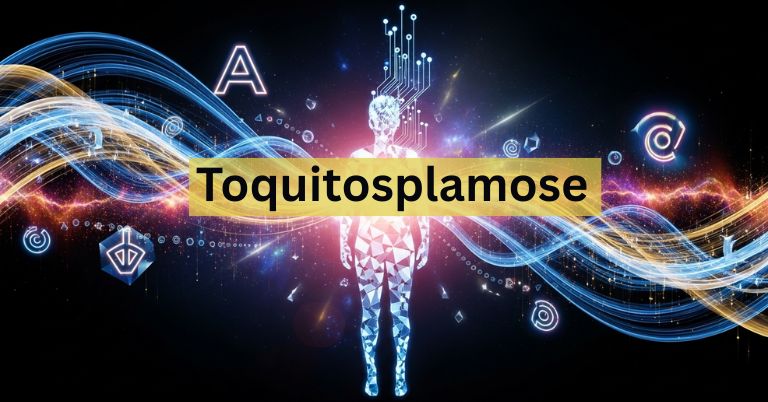In the past few months, the word “toquitosplamose” has been making its way into various online spaces, including blogs, social media threads, online art circles and technological forums. This word is quite peculiar, but it is also quite interesting. In the dictionary, the word “toquitosplamose” does not exactly have a predetermined meaning; however, it is quickly becoming a cultural icon. What each individual wants it to be, whether it be a fun idea, a creative spark, or an experimental thought, it is whatever they want it to be.
The Emergence of Toquitosplamose
In the beginning of the year 2025, the first mentions of toquitosplamose can be found published in creative blogs and threads of a smaller scale. At first, individuals were somewhat perplexed, leading them to wonder whether it was a typo, a meme, or a word that had been made up. However, over the course of time, users have started to adopt it, frequently as a kind of badge for carrying out imaginative experiments.
One describes toquitosplamose as something like “a word that feels full of life and mystery” and notes that while it belongs to no known language, its sound evokes movement, play and energetic creativity. Others have tried to root its meaning by combining “toqui”, “plasma” and “mose” (or parts thereof), imagining it as a fusion concept blending art, tech, or expressive chaos.
Thus, toquitosplamose is indeed in flux – it is comparatively more of a cultural prompt or imaginative container than a fixed term.
What Toquitosplamose Suggests: Interpretations & Themes
Due to the fact that toquitosplamose has no rigid definition as such, people interpret it quite differently – often in overlapping themes. Below are several recurring interpretations:
| Interpretation | Key Idea |
| Creative spark / energy | A burst of imagination or joy |
| Fusion of technology + culture | Infusing tradition or human meaning into tech |
| Playful experimentation | Remixing ideas, aesthetic mashups |
| Social/collective identity | A shared term for imaginative communities |
Because it is comparatively malleable, toquitosplamose becomes most powerful when people make it their own.
Use Cases: How Toquitosplamose Is Being Applied
Here are some domains where toquitosplamose is already being referenced and quite plausibly put into practice:
1. Digital Creativity & Design
When designers combine emotive artwork with algorithmic or generative systems, they frequently use the term “toquitosplamose” to describe the experience. An aesthetic that is not quite sterile or mechanical, but rather fun, hybrid and surprising is referred to by this word, which becomes somewhat descriptive of the aesthetic.
For instance, a collective could build interactive murals in which the movements of spectators induce “plasma-like” visual effects. This would be a live canvas, which would be an incarnation of toquitosplamose in motion.
2. Technology & AI Integration
Toquitosplamose is a term that is used in the field of technology to be able to refer to workflows or systems that combine human intuition with automated intelligence. Consider the possibility of systems that not only react but also change with “character”.
The argument made in a write-up is that toquitosplamose “acts as the glue” connecting different Internet of Things (IoT) and cloud platforms, which enables smoother interoperability.
3. Marketing, Branding & Culture
Brands have actually started using toquitosplamose as a branding device because it is a mysterious hook that conveys innovation, unpredictability, and expressive flair into the communication process. Due to the fact that it does not have a predetermined meaning, it is open to interpretation by the audience.
Using toquitosplamose as a concept for narrative arcs, visual identity motifs, or user challenge prompts is something that campaigns might consider applying. At the moment, it is more provocative than what is being prescribed.
4. Food & Art Mashups
In some playful content, the term “toquitosplamose” is used in culinary contexts. This means that the concepts of “taquito” and “splamose” are combined to create dishes that are experiments in the realm of the whimsical.
Even though these accounts are more on the fantastical side, they show how people are using the word in contexts other than pure technology or art, bringing it into realms that are more commonplace.
Benefits & Potential of Toquitosplamose
What makes toquitosplamose more than a fad? Why are people gravitating toward it? Some of its promising advantages:
- Creative flexibility: Due to the fact that it is not defined, it permits broad interpretation and proprietorship.
- Cross‑disciplinary resonance: it provides a bridge between art, technology, culture and even lifestyle.
- Viral potential: The mystery surrounding it encourages conversation, memes, adoption and remixing.
- Catalyst for innovation: In addition to encouraging risk, exploration and surprise beyond the realm of conventional patterns, it acts as a catalyst for creativity.
- Cultural sensitivity: Some advocates claim that it can assist in the incorporation of heritage or local narratives into contemporary systems (provided that it is done in a responsible manner).
However, like any concept, toquitosplamose risks being hollow if used purely as a buzzword without substance.
Challenges & Pitfalls
Any concept that rides on ambiguity must handle certain hazards. Here are key challenges around toquitosplamose:
- Vagueness fatigue: There is a possibility that individuals will become exhausted from hearing the term “toquitosplamose” without actually witnessing its application.
- Overuse as branding fluff: When used excessively as branding fluff, its perceived richness can be diminished if it is used crudely.
- Cultural appropriation risks: When it comes to fusion applications, borrowing traditional themes or traditions under the banner of toquitosplamose needs to be treated with caution and respect.
- Scalability issues: Potential problems with scalability include the fact that what is successful in small creative teams may be difficult to implement in huge, bureaucratic companies.
- Misalignment: If the definitions of toquitosplamose are vastly different across the many stakeholders, then it is possible that it will produce confusion rather than alignment.
In order to mitigate, practitioners might start small, pilot experiments, invite feedback and ground the term in narrative and context rather than empty labels.
How to Experiment with Toquitosplamose: A Practical Approach
- Anchor a theme or domain: Choose an area you want to apply toquitosplamose (e.g. web UI, short film, brand messaging, food).
- List remixed inputs: Gather elements, artifacts, motifs, or datasets you care about.
- Layer surprises or “splashes”: Insert small whimsical or unexpected touches (visual glitch, poetic phrasing, sound effect).
- Invite feedback: Show early versions to peers; see how they interpret the “toquitosplamose” effect.
- Iterate and refine: Based on feedback, lean into what feels alive, cut what feels inert.
As with any creative idea, success may come more from persistence and playful risk than careful planning.
Why Toquitosplamose Matters
Toquitosplamose is a gesture that goes toward the unquantifiable, the unpredictable and the lived spark in the midst of a digital era that is saturated with templates, filters and algorithmic conformity. Those who are creative and thinkers are encouraged to resist the idea of pure optimization and to leave room for surprise.
As a result of its resistance to rigid boundaries, it is able to exist across disciplines such as art, engineering, storytelling, and marketing. It acts as a bridge between individuals who frequently do not speak the same language.
In order to put it another way, toquitosplamose serves as a reminder that the most significant aspects of culture are not always presented in their entirety. They come into existence, roughly shaped, and develop as a result of the collective imagination.
Final Thoughts
At first glance, the rise of toquitosplamose may seem like just another internet curiosity, which is a made-up word with no clear meaning. But what makes it interesting is that there isn’t a clear definition of it. In a world where standardized systems and predictable content are becoming more common, toquitosplamose creates a space for uncertainty, play, and limitless creativity.
The cultural momentum around toquitosplamose doesn’t say what it should mean, but it does suggest that it might be meant to inspire people to come up with their own meanings. It can be used to create a new kind of digital art, a tech solution that is more focused on people, or just a fun way to look at everyday things in a new way.
As more groups, designers and creators try out the word, toquitosplamose could change from a strange trend into a real cultural and creative symbol that values imagination, hybrid thinking and happy disruption. So, in that way, accepting toquitosplamose isn’t about following a trend; it’s about bringing something to life in your work, your world, and maybe even your words.
Also Read: The Tuitaerica Mindset: Living Boldly in the Digital Age

I am a content writer with proven experience in crafting engaging, SEO-optimized content tailored to diverse audiences. Over the years, I’ve worked with School Dekho, various startup pages, and multiple USA-based clients, helping brands grow their online visibility through well-researched and impactful writing.


